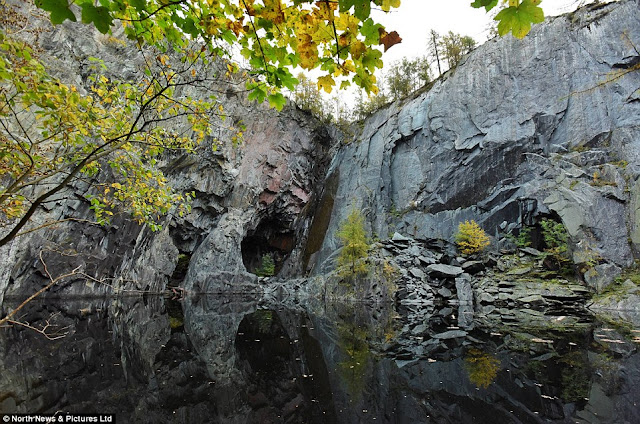In the
north of Tunisia “Mehdi Bilel” was returning home after attending a marriage,
when he shocked spotted a large lake shining in the hot sun, in the middle of
the scorching desert, around 25 kilometers from the city of Gafsa. He was stood
on its shore in speechless silence. Though, there wasn’t any lake here few days
ago. Initially he thought he was may be in vehement. But this was a real fact,
which he wasn’t negated. Then he went for walking several hours on the road
without a break, and the heat could play all sorts of tricks upon the brain.
But Mehdi Bilel wasn’t imagining things, how the lake had really materialized
out of nowhere. The lake covers a hectare in area and is 10 to 18 meters deep.
Therefore, without any delay, this news of the mysterious lake spread like
wildfire and massive mob of Tunisians flocked to what quickly became recognized
as the “Lac de Gafsa” or Gafsa beach to swim and cool off in the region’s 40
degree C heat. This incident was happened on August 2014, as Tunisia was in the
middle of a scorching drought, which made the lake’s unexpected appearance even
more mysterious. However, the origin of the formation of the lake Lac de Gafsa
is not clear. Therefore, the most likely explanation is that a minor earthquake
had cracked the rock above the water table sending millions of cubic meters of
water up to the surface.
The
enigmatic lake has since become a major tourist attraction of this area.
Though, swimming is dangerous here, as the lake water could be contaminated
with phosphates. Because the southern Tunisian region is very rich in phosphate
which is found in the region’s soil and rocks. Since its discovery in 1886,
Gafsa has become the center of the country's mining industry. Moreover,
phosphorous compounds are used to manufacture anything from fertilizers, pesticides,
and detergents, to matches and chemical weapons, you may understand like this,
that all the dangerous stuff. Further, phosphate happens to leave behind a
radioactive residue, that if the lake is contaminated, the water is both
radioactive and carcinogenic. Then, the first signal that something wasn’t
quite with Lac de Gafsa appeared within a couple of days of its appearance. The
water color changed from clear, crystalline blue to murky green due to a bloom
of algae, which meant that the water was not being refilled and therefore could
be teeming with bacteria and diseases. Therefore, almost two weeks after the
lake appeared, the Office of Public Safety in Gafsa warned the natives that it
was unsafe to swim in the lake, but few heeded the warning. Masses of people
still come to lake to swim and stave off the desert heat.
































